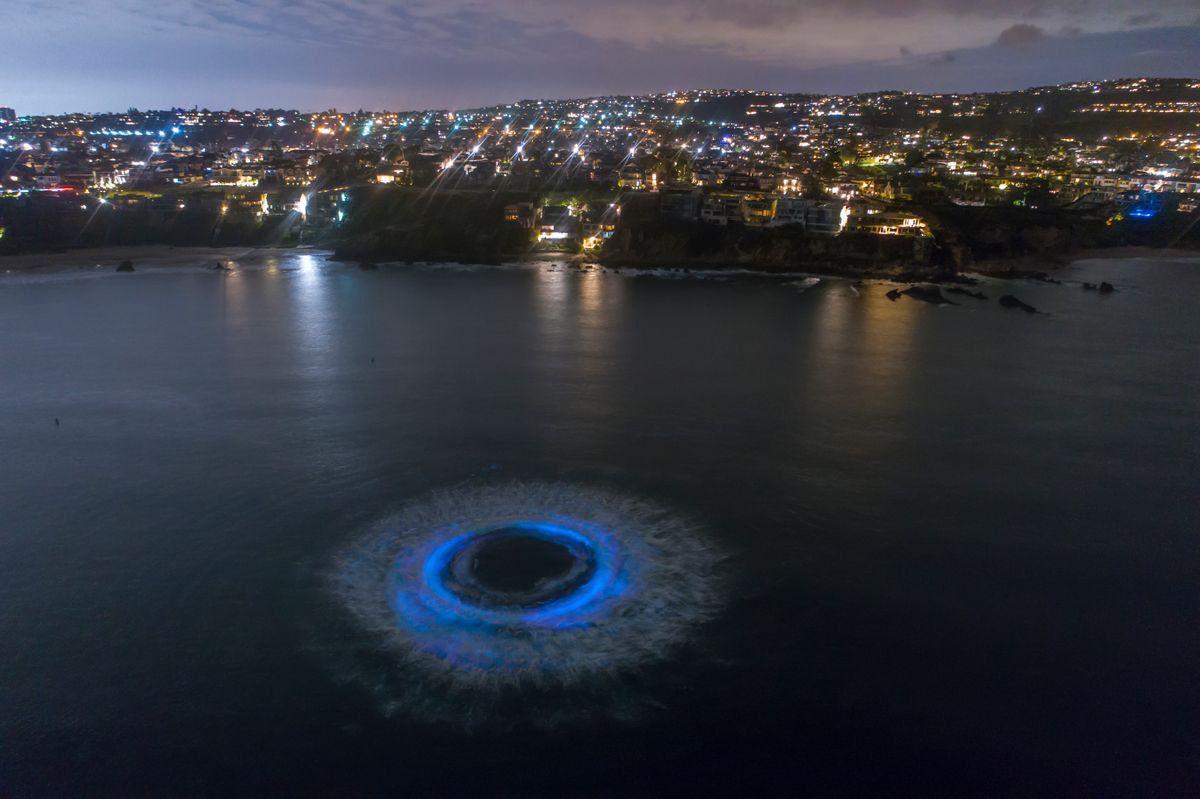It can be tricky to find the glowing waves that everyone loves to see! However, there are some tricks that can help you search for it. Bioluminescence occurs more often then we think but it goes unnoticed by so many. I've watched people walk along the beach during bright bioluminescence and told them about it and they were shocked as they didn't even notice, this is very common! Not only do people not spend much time at the beach at night but the people that do usually don't even pay attention to the actual glowing waves. And even if they do notice it, most people are not sure how to photograph it and get the word out to the world.
How to find bioluminescence
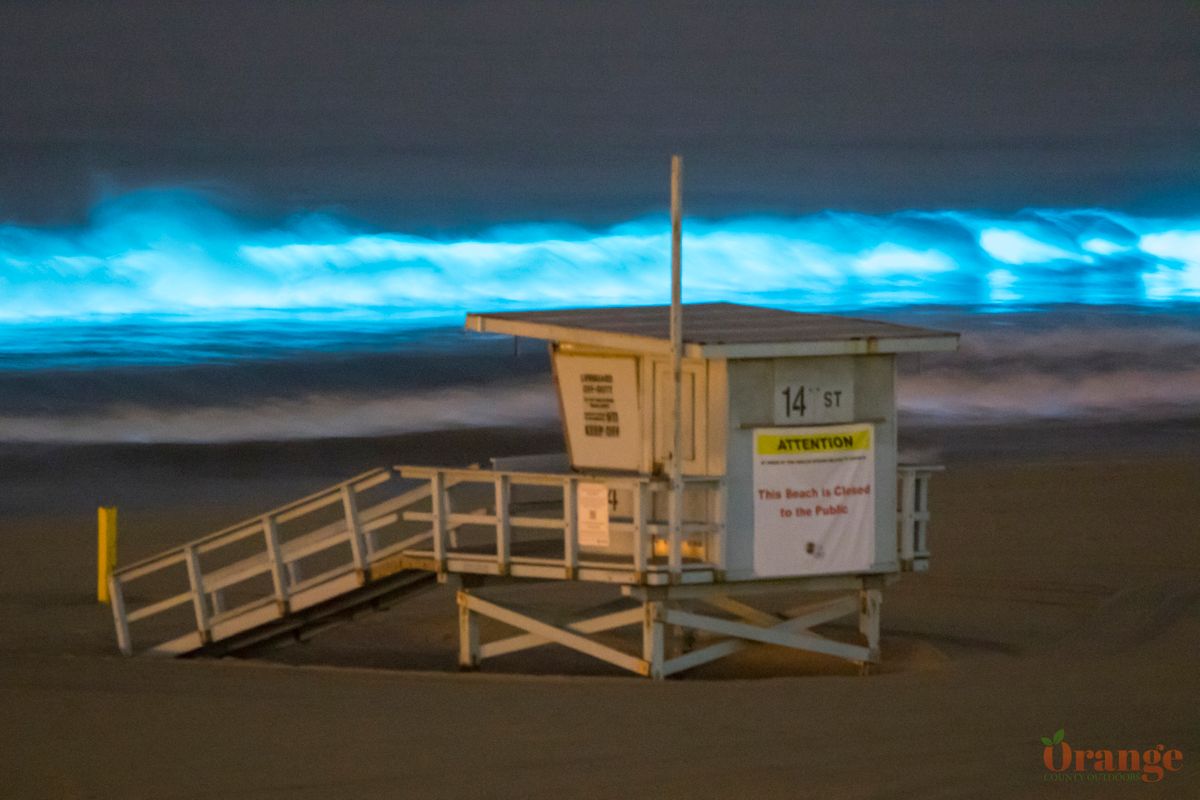
How do I search for glowing waves?
During daylight, you can search for red tide from the beach with a drone or you can see it from a boat along the coast. The water has a heavy brownish/reddish color. It will often be streaky, you might see streaks spread out across a large area. If you do see some red tide, go back to the beach in that area at night to see if it lights up.
During nighttime, you will likely need to check several beaches to find it. At each beach you check, spend at least 10 minutes there watching the waves without looking at your phone or any other bright lights. Let you eyes adjust to the darkness because sometimes the blue glow is faint. If you do see some faint glow in the smaller waves, wait to see if a larger set of waves rolls in and that'll likely be brighter. If you see no signs of blue glowing waves, drive along the coast to a different beach, try anywhere from 1/2 mile away to a few miles away. The bioluminescence can sometimes be really good at one beach and be completely gone at a beach just 1/4 mile away sometimes.
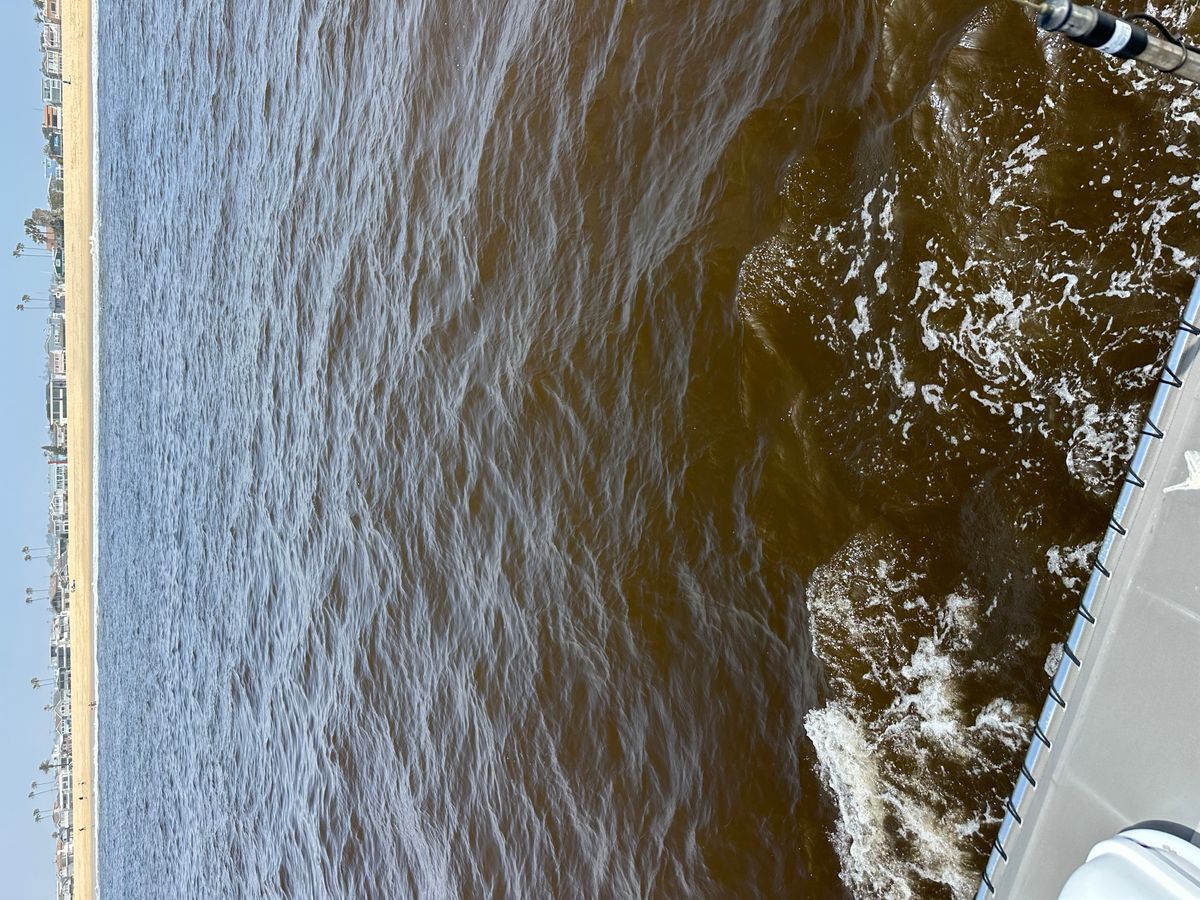
Is there a season for bioluminescence?
No, bioluminescence can occur any month of the year in California. In some places like in Florida and Costa Rica, bioluminescence is a seasonal thing and can be predicted accurately enough to run kayak tours. However, here in California many varying factors play the major roles in producing a good red tide. These factors include rain, sun, wind, currents etc...
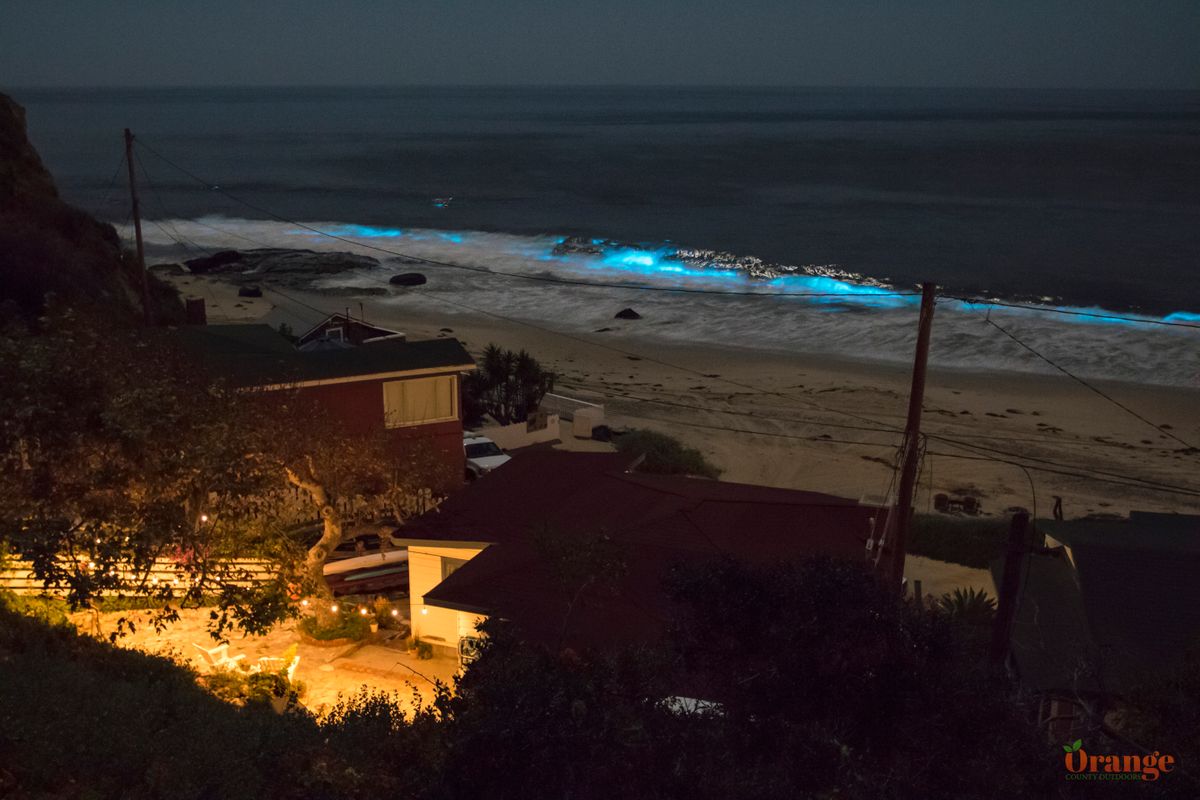
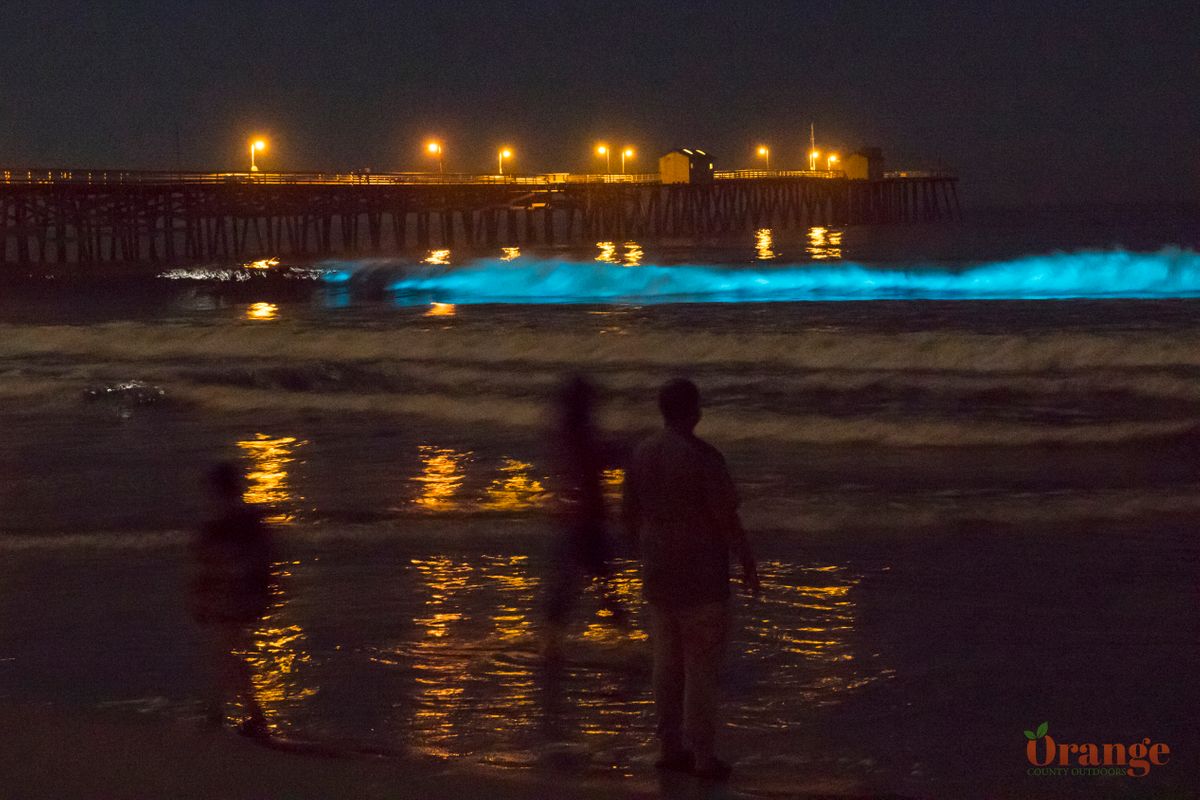
How long will it last?
There is absolutely no way to know how long any bioluminescence event will last. There are many factors that come into play including rain, wind, sunlight, currents and these factors can sometimes cause bioluminescence to be really good in one area for a month or more while sometimes these factors can cause it to drift away after a day or two. The red tide bloom is completely unpredictable and moves around with the currents.
What's the best time of night?
As long as it's dark out with no light in the sky at all, you can see bioluminescence. The dinoflagellates that create the blue glow have a circadian rhythm and will only light up at night. Sometimes they get much brighter later into the night around midnight while sometimes they start lighting up nice and early. This is one of the factors that have not been determined yet and it's unknown why or when they will light up earlier vs. later. Don't go looking for bioluminescence until at least an hour or two after sunset.
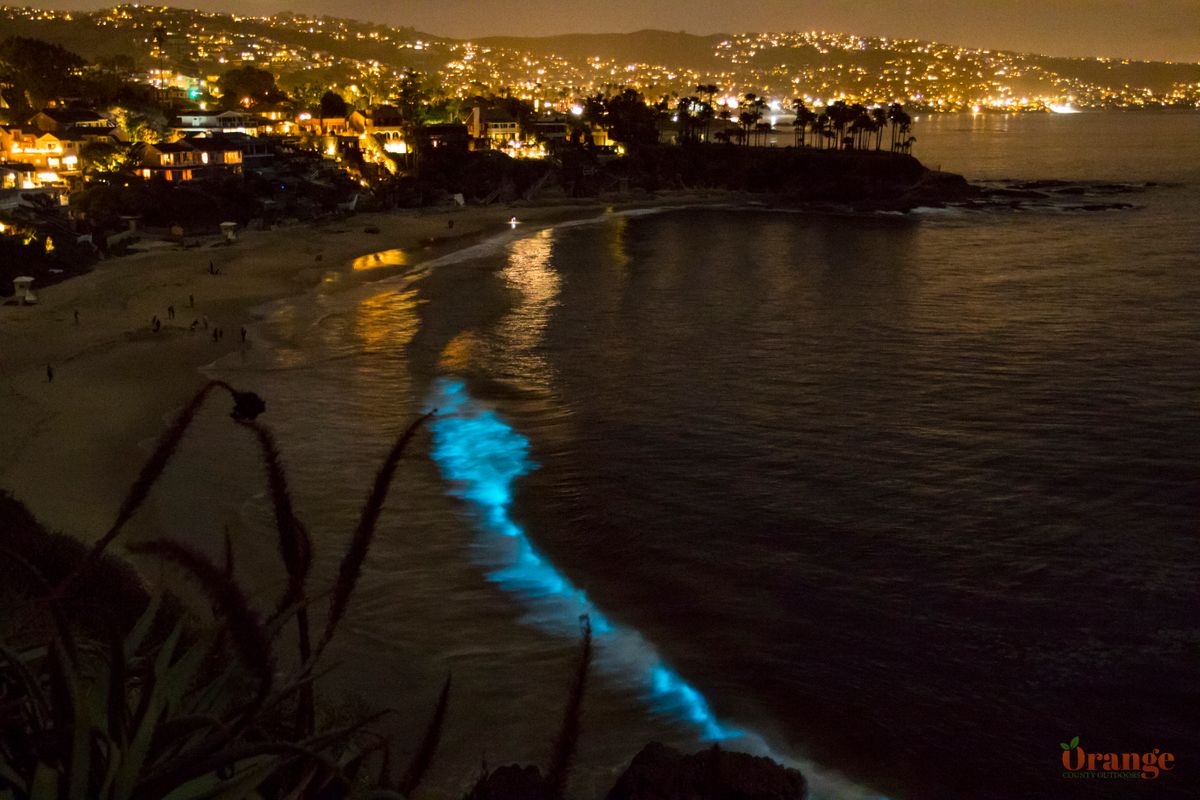
Does it only happen in warm water during the summer?
No, dinoflagellates can create their amazing blue glow in any of the temperatures we experience here in Southern California. We have seen bioluminescence every month of the year. The biggest factor seems to be when we get a good amount of rain followed by sunlight.
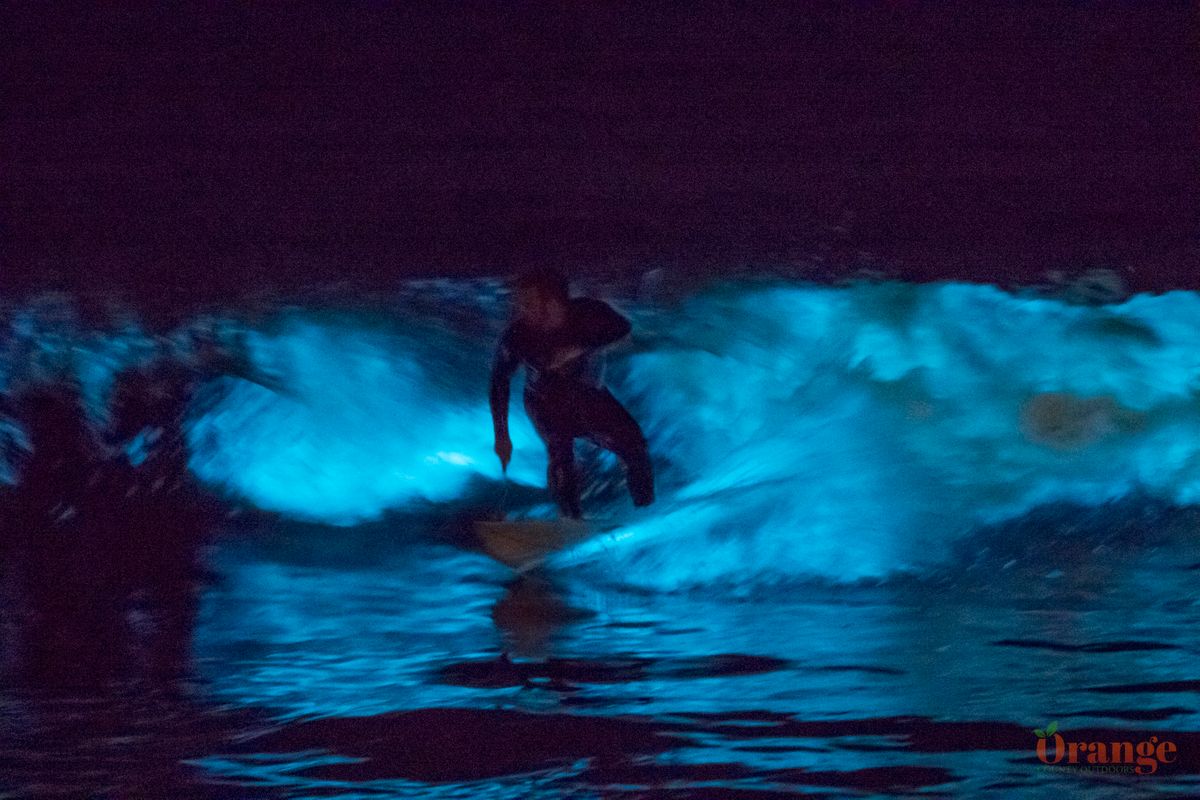
How do you photograph it?
Cameras are advancing so much in recent years and have the ability to pick up lowlight better than ever. You no longer need a professional camera to photograph bioluminescence although you will get sharper and brighter shots if you do. Ideally, the best way to photograph this phenomenon is with a mirrorless camera, this lets the most amount of light in. You'll want a lens with a large aperture, at least 2.8 but a 1.8 would be ideal. If the bioluminescence is bright, you can shoot it with an f4 lens.
With a dslr or mirrorless camera: For photos, open up your aperture as wide as it can go, if you can do 1.8 or even 2.8, you'll be good. You'll want a slow exposure but not a long exposure because you'll just blur the waves and it won't look sharp. I typically find the best shutter speed for bioluminescent waves is between 1/10 and 1/60 depending on how bright the waves are and if I'm trying to keep the ISO down. Since it's such a dark scene, you'll definitely need to bump the ISO up much more than you're willing to go. As a photographer, you're always trying to keep that ISO down but trust me, bump it way up, if you're camera can do 50,000+ do it. You can bump it back down if the waves are bright and you can also use noise reduction in post. For focus, you'll need to use manual focus, turn on your lcd screen and zoom in digitally on the waves that are breaking, set your focus there.
For video: You'll want the lowest frame rate to let the most amount of light in with each frame. 4k at 24fps is best, if you don't have a 4k camera then 1080 at 24fps is just fine. Adjust your shutter speed to 1/50 with the widest open aperture you can go. Bump that ISO way up, try 50,000+ if your camera can do it. Some cameras require you to go into the settings menu to allow your camera to bring the ISO up that high. It's better to have a noisy video with glowing waves then to be too worried about noise and not have glowing waves. Set your focus manually on the waves and shoot away! It's
For cell phone cameras: Luckily in recent years, cameras on phone have been getting so much better and the latest models can capture lowlight good enough to photograph and film the glowing waves. For iphones, the lens that allows the lowest light in is the 1x zoom lens. Don't try to zoom in or out because the shot will get too dark, shoot at 1x zoom and 4k 24. Capturing photos with the newer model phones is pretty good now as well! Make sure to turn your FLASH OFF!!! This was you won't ruin other peoples photos, the flash will ruin your photo as well since it will illuminate the moisture in the air from the waves. Put your phone on night mode which will typically shoot a 3 second exposure. Hold you phone as steady as possible and hit the shutter just before a wave crashes, wait for the timer to finish before moving your phone.
This photo was taken with an iphone.
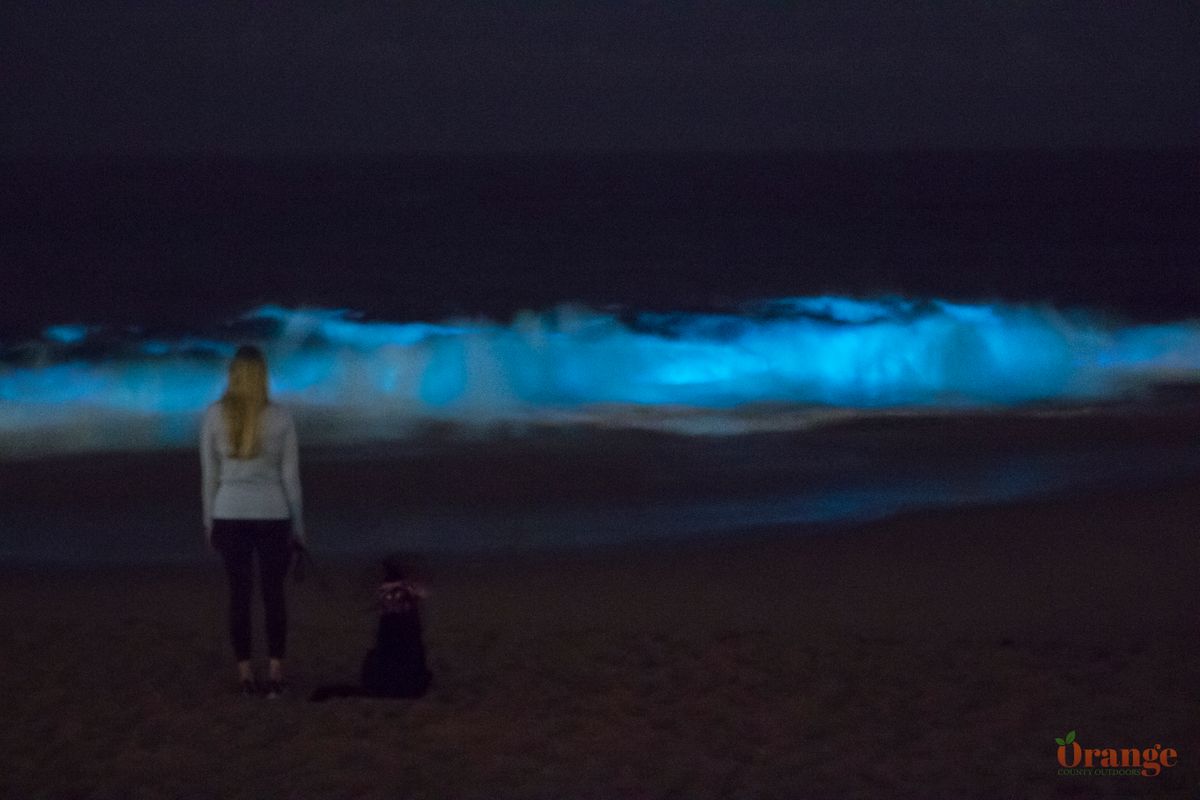
How do I walk in it where it lights up?
This won't happen much in the waves because that water is already disturbed. Sometimes at beaches though, you'll find a pool of water that has collected on the beach from the high tide before the tide receded. When this happens, try walking through it or putting your hands in and see if it lights up. Sometimes in the harbors, the water is also calm enough to light up but it depends on where you are in each harbor. The currents and tides can push the dinoflagellates to different areas of the harbors.
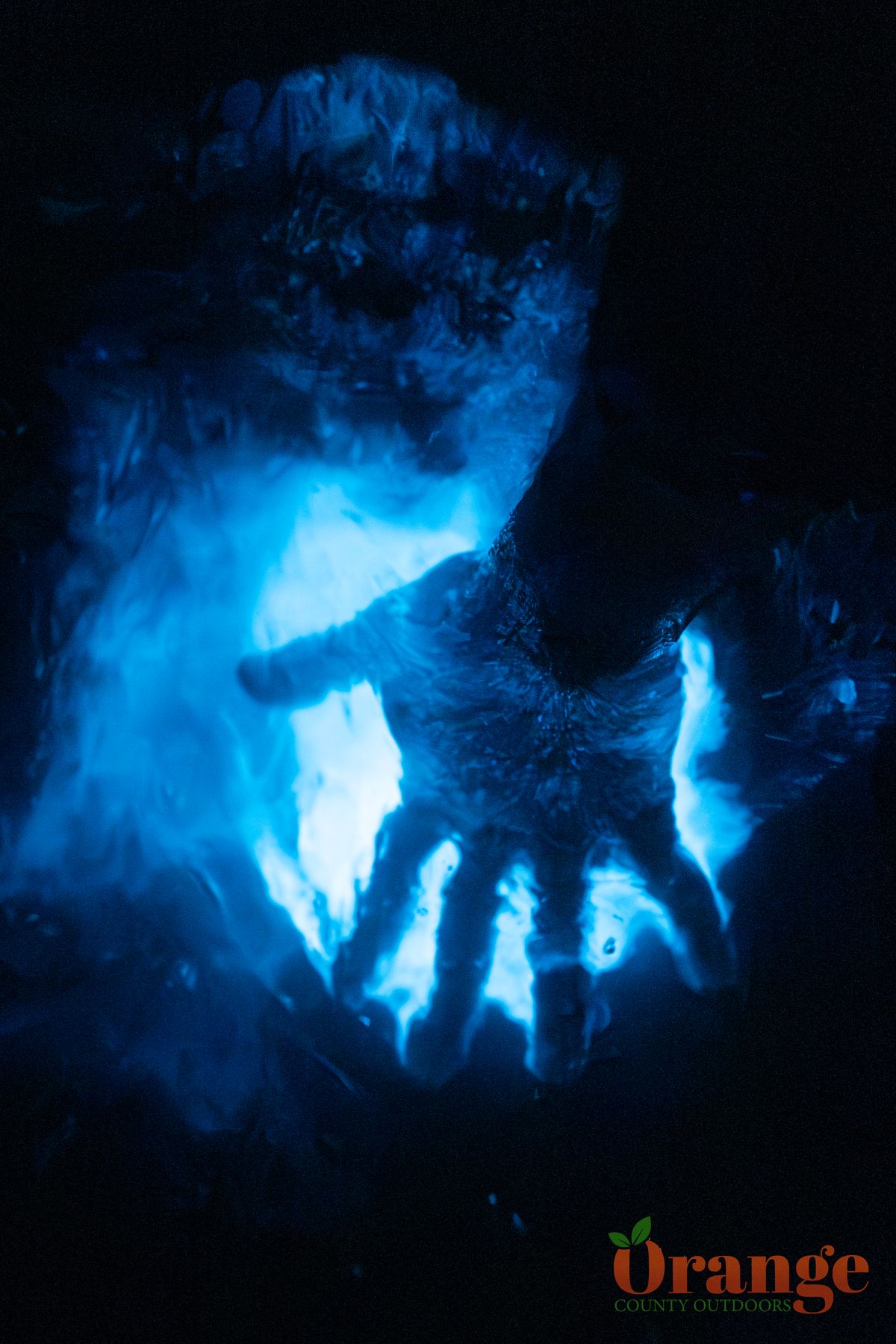
How can I get on a boat to see it?
This can be an amazing tour to experience but the bioluminescence has to be very good for whale watching companies to put trips online to see the blow glow, this is because it's such a risk to run the trips and have the bioluminescence disappear and have a lot of bummed out customers. When it's good, it's good but when it's gone, it's gone. Davey's Locker just started running bioluminescence trips in 2023 and will put them online only when the bioluminescence is good, not sure patchy at some beaches. You can follow their social media pages to watch for them to add bio trips.
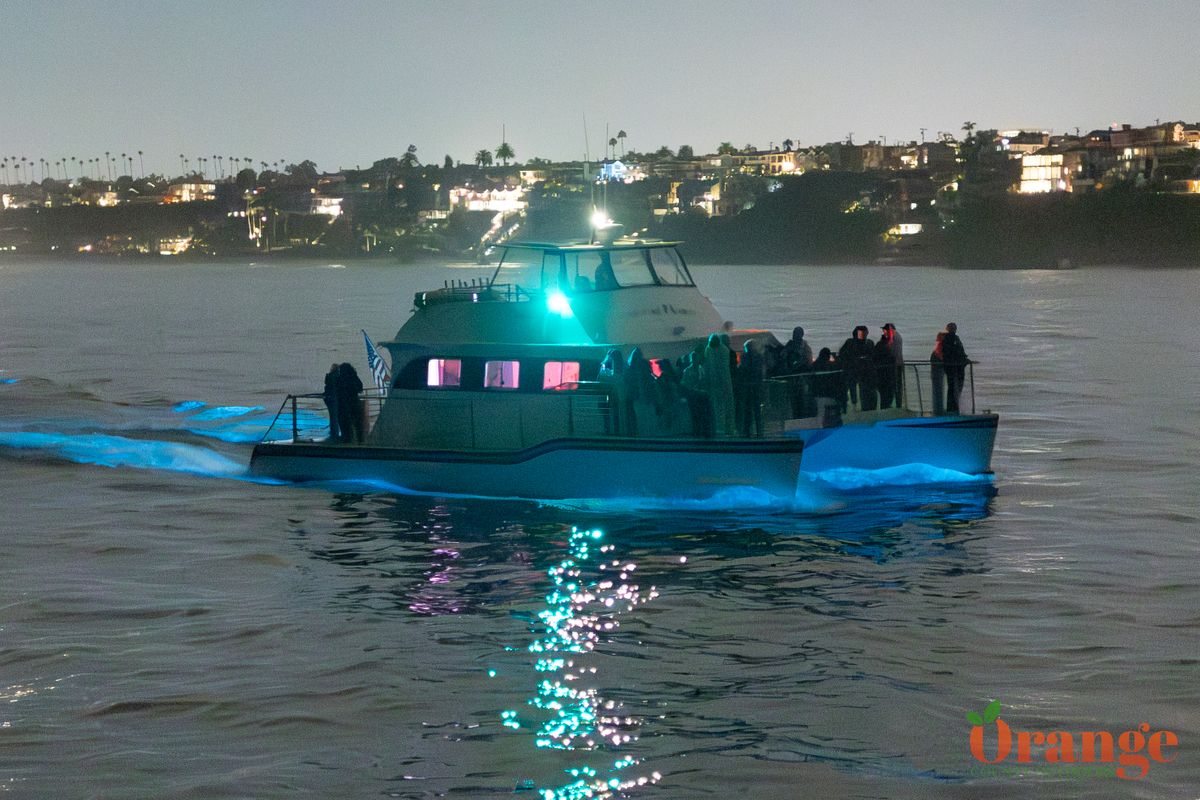
Can a drone photograph it?
Most cameras on drones are great quality but are not great for lowlight. If the waves are very bright then you can sometimes get video but otherwise you can shoot long exposure photos to capture it. Here is a long exposure of a boat doing donuts right off Newport Beach in 2020.
